Stemperando I Biennale Internazionale di Opere su Carta

Stemperando I Biennale Internazionale di Opere su Carta, Biblioteca Nazionale Universitaria di Torino
Dal 5 February 2015 al 8 March 2015
Torino
Luogo: Biblioteca Nazionale Universitaria di Torino
Indirizzo: piazza Carlo Alberto 3
Orari: da lunedì a venerdì 10-18; sabato 10-13
Curatori: Anselmo Villata, Alfred Milot Mirashi
Enti promotori:
- Istituto Nazionale d’Arte Contemporanea
Costo del biglietto: ingresso gratuito
Telefono per informazioni: +39 011 8101111
E-Mail info: info@stemperando.it
Sito ufficiale: http://www.stemperando.it
Giovedì 5 febbraio prossimo sarà ufficialmente inaugurata la sesta edizione della Biennale Internazionale di opere d’arte su carta “Stemperando” che si realizzerà in tre tappe: Torino, Tirana, Roma, mantenendo inalterati i suoi obiettivi e le sue caratteristiche.
La Biblioteca Nazionale Universitaria di Torino ospiterà la prima tappa della rassegna, nata a Spoleto nel 2003 in concomitanza con il Festival dei due mondi. Successivamente, le opere saranno trasferite a Tirana e la mostra sarà allestita al Museo Storico Nazionale dell’Albania. Infine, come ultima tappa, il gruppo di opere ritornerà in Italia e la mostra sarà composta a Roma, al Museo Villa Vecchia di Villa Doria Pamphili, dove concluderà il suo percorso.
Stemperando è divenuto, ormai, un evento di grande rilevanza, atteso dal pubblico e dai media e conserva tra i suoi spiriti originari quello di proporre l’attualità creativa di artisti di diverse fasce d’età e di diverse provenienze geografiche e culturali attraverso l’uso di uno tra i materiali più raffinati in arte, vale a dire la carta.
Inoltre, questa edizione si è arricchita di una sezione storica in cui sono raccolte opere di grandi Maestri del Novecento. Essa mantiene anche il carattere itinerante che gli consente di incrementare il numero dei visitatori spostandosi in tre prestigiose sedi.
Questa sesta edizione è curata da Anselmo Villata e, per la Nazione Ospite d’Onore, Albania, Alfred Milot Mirashi ed è promossa dall’Istituto Nazionale d’Arte Contemporanea, con il contributo alla realizzazione di Verso l’Arte Edizioni che ha predisposto l’edizione di un catalogo di 160 pagine a colori, in italiano, albanese e inglese, in cui verranno pubblicate tutte le opere esposte, le note biografiche degli artisti partecipanti, i testi critici di Anselmo Villata e di Alfred Milot Mirashi, l’introduzione dell’Istituto Nazionale d’Arte Contemporanea, le presentazioni di Andrea De Pasquale, Direttore della Biblioteca Nazionale Universitaria di Torino, di Melsi Labi, Direttore del Museo Storico Nazionale dell’Albania, di Antonella Parigi, Assessore alla Cultura e al Turismo della Regione Piemonte, di Mirela Kumbaro Furxhi, Ministro della Cultura dell’Albania e di Neritan Ceka, Ambasciatore d’Albania in Italia.
La nazione ospite d’onore di questa sesta edizione è l’Albania, con un rosa di 18 artisti rappresentativi del proprio ambiente culturale, mostrando stupefacente attività e vitalità artistica, un’imperdibile occasione di proporsi al mondo grazie ad una Biennale che garantirà la giusta visibilità e allo stesso tempo consentirà ad un ampio pubblico di entrare in contatto con la contemporaneità artistica di questa nazione al centro del Mediterraneo.
La mostra gode dei Patrocini di: I.N.A.C., Istituto Nazionale d’Arte Contemporanea; Ministero dei Beni e delle Attività Culturali e del Turismo – Direzione Generale Biblioteche e Istituti Culturali; Regione Piemonte; Ministero della Cultura dell’Albania; Ambasciata dell’Albania in Italia; Biblioteca Nazionale Universitaria di Torino; Museo Storico Nazionale dell’Albania; Museo Villa Vecchia di Villa Doria Pamphili.
Per la sezione internazionale:
Alberto Biasi, Alberto Brusa, Paolo Conti, Gao Yang, Graham Guerra, Kivanç Gülhan, Ali Herischi, Jiang Shanqing, Susan Leyland, Paolo Marazzi, Carlo Mazzetti, Xavier Medina Campeny, Sophia Michaeledes, Azad Nanakeli, Qiu Yi, Ran Xue Mei, Claudio Sacchi, Michele Stanzione, Martin Streitenberger, Andreas Tomblin, Jorrit Tornquist, Lucio Trizzino;
per la sezione storica: Georges Braque, Francesco Casorati, Enrico Colombotto Rosso, Samo Koler, Riccardo Licata, Umberto Mastroianni, Franc Oldering, Mario Schifano, Giacomo Soffiantino, Alberto Sughi.
Nazione ospite, Albania: Albien Alushaj, Helidon Haliti, Ardian Isufi, Pjeter Koleci, Beskida Kraja, Gjon Jon Kraja, Vladimir Llakaj, Fatos Lubonja, Ormira Lulani, Alban Met-hasani, Alkan Nallbani, Andi Nallbani, Admir Pervathi, Parlind Prelashi, Agron Rushiti, Alberto Saka, Helidon Xhixha, Armand Xhomo.
Nazione ospite d’Onore: Albania, a cura di Alfred Milot Mirashi
Altre sedi:
ad Aprile: Tirana - Museo Nazionale Storico Albanese
a giugno: Roma - Museo di Villa Vecchia - Villa Doria Pamphili
La Biblioteca Nazionale Universitaria di Torino ospiterà la prima tappa della rassegna, nata a Spoleto nel 2003 in concomitanza con il Festival dei due mondi. Successivamente, le opere saranno trasferite a Tirana e la mostra sarà allestita al Museo Storico Nazionale dell’Albania. Infine, come ultima tappa, il gruppo di opere ritornerà in Italia e la mostra sarà composta a Roma, al Museo Villa Vecchia di Villa Doria Pamphili, dove concluderà il suo percorso.
Stemperando è divenuto, ormai, un evento di grande rilevanza, atteso dal pubblico e dai media e conserva tra i suoi spiriti originari quello di proporre l’attualità creativa di artisti di diverse fasce d’età e di diverse provenienze geografiche e culturali attraverso l’uso di uno tra i materiali più raffinati in arte, vale a dire la carta.
Inoltre, questa edizione si è arricchita di una sezione storica in cui sono raccolte opere di grandi Maestri del Novecento. Essa mantiene anche il carattere itinerante che gli consente di incrementare il numero dei visitatori spostandosi in tre prestigiose sedi.
Questa sesta edizione è curata da Anselmo Villata e, per la Nazione Ospite d’Onore, Albania, Alfred Milot Mirashi ed è promossa dall’Istituto Nazionale d’Arte Contemporanea, con il contributo alla realizzazione di Verso l’Arte Edizioni che ha predisposto l’edizione di un catalogo di 160 pagine a colori, in italiano, albanese e inglese, in cui verranno pubblicate tutte le opere esposte, le note biografiche degli artisti partecipanti, i testi critici di Anselmo Villata e di Alfred Milot Mirashi, l’introduzione dell’Istituto Nazionale d’Arte Contemporanea, le presentazioni di Andrea De Pasquale, Direttore della Biblioteca Nazionale Universitaria di Torino, di Melsi Labi, Direttore del Museo Storico Nazionale dell’Albania, di Antonella Parigi, Assessore alla Cultura e al Turismo della Regione Piemonte, di Mirela Kumbaro Furxhi, Ministro della Cultura dell’Albania e di Neritan Ceka, Ambasciatore d’Albania in Italia.
La nazione ospite d’onore di questa sesta edizione è l’Albania, con un rosa di 18 artisti rappresentativi del proprio ambiente culturale, mostrando stupefacente attività e vitalità artistica, un’imperdibile occasione di proporsi al mondo grazie ad una Biennale che garantirà la giusta visibilità e allo stesso tempo consentirà ad un ampio pubblico di entrare in contatto con la contemporaneità artistica di questa nazione al centro del Mediterraneo.
La mostra gode dei Patrocini di: I.N.A.C., Istituto Nazionale d’Arte Contemporanea; Ministero dei Beni e delle Attività Culturali e del Turismo – Direzione Generale Biblioteche e Istituti Culturali; Regione Piemonte; Ministero della Cultura dell’Albania; Ambasciata dell’Albania in Italia; Biblioteca Nazionale Universitaria di Torino; Museo Storico Nazionale dell’Albania; Museo Villa Vecchia di Villa Doria Pamphili.
Per la sezione internazionale:
Alberto Biasi, Alberto Brusa, Paolo Conti, Gao Yang, Graham Guerra, Kivanç Gülhan, Ali Herischi, Jiang Shanqing, Susan Leyland, Paolo Marazzi, Carlo Mazzetti, Xavier Medina Campeny, Sophia Michaeledes, Azad Nanakeli, Qiu Yi, Ran Xue Mei, Claudio Sacchi, Michele Stanzione, Martin Streitenberger, Andreas Tomblin, Jorrit Tornquist, Lucio Trizzino;
per la sezione storica: Georges Braque, Francesco Casorati, Enrico Colombotto Rosso, Samo Koler, Riccardo Licata, Umberto Mastroianni, Franc Oldering, Mario Schifano, Giacomo Soffiantino, Alberto Sughi.
Nazione ospite, Albania: Albien Alushaj, Helidon Haliti, Ardian Isufi, Pjeter Koleci, Beskida Kraja, Gjon Jon Kraja, Vladimir Llakaj, Fatos Lubonja, Ormira Lulani, Alban Met-hasani, Alkan Nallbani, Andi Nallbani, Admir Pervathi, Parlind Prelashi, Agron Rushiti, Alberto Saka, Helidon Xhixha, Armand Xhomo.
Nazione ospite d’Onore: Albania, a cura di Alfred Milot Mirashi
Altre sedi:
ad Aprile: Tirana - Museo Nazionale Storico Albanese
a giugno: Roma - Museo di Villa Vecchia - Villa Doria Pamphili
SCARICA IL COMUNICATO IN PDF
alberto biasi
·
biblioteca nazionale universitaria di torino
·
claudio sacchi
·
xavier medina campeny
·
susan leyland
·
paolo conti
·
carlo mazzetti
·
alberto brusa
·
gao yang
·
graham guerra
·
ali herischi
·
jiang shanqing
·
paolo marazzi
·
sophia michaeledes
·
azad nanakeli
·
qiu yi
·
ran xue mei
·
michele stanzione
·
COMMENTI

-
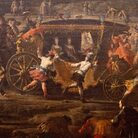 Dal 20 December 2025 al 20 April 2026
Caserta | Reggia di Caserta
Dal 20 December 2025 al 20 April 2026
Caserta | Reggia di Caserta
Regine: trame di cultura e diplomazia tra Napoli e l’Europa
-
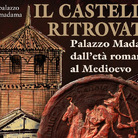 Dal 19 December 2025 al 23 March 2026
Torino | Palazzo Madama - Museo Civico d’Arte Antica
Dal 19 December 2025 al 23 March 2026
Torino | Palazzo Madama - Museo Civico d’Arte Antica
Il castello ritrovato. Palazzo Madama dall’età romana al medioevo
-
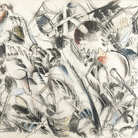 Dal 17 December 2025 al 19 January 2026
Roma | Palazzo della Cancelleria
Dal 17 December 2025 al 19 January 2026
Roma | Palazzo della Cancelleria
De Humana Mensura di Linda Karshan
-
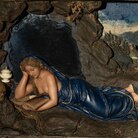 Dal 18 December 2025 al 12 April 2026
Firenze | Gallerie degli Uffizi
Dal 18 December 2025 al 12 April 2026
Firenze | Gallerie degli Uffizi
Cera una volta. Sculture dalle collezioni medicee
-
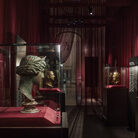 Dal 11 December 2025 al 9 April 2026
Firenze | Museo Archeologico Nazionale di Firenze
Dal 11 December 2025 al 9 April 2026
Firenze | Museo Archeologico Nazionale di Firenze
Icone di Potere e Bellezza
-
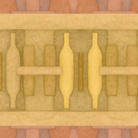 Dal 11 December 2025 al 11 January 2026
Roma | Palazzo Esposizioni Roma
Dal 11 December 2025 al 11 January 2026
Roma | Palazzo Esposizioni Roma
Giorgio Morandi nella Collezione Eni. Un viaggio attraverso la storia culturale del cane a sei zampe e l’eredità di Enrico Mattei


